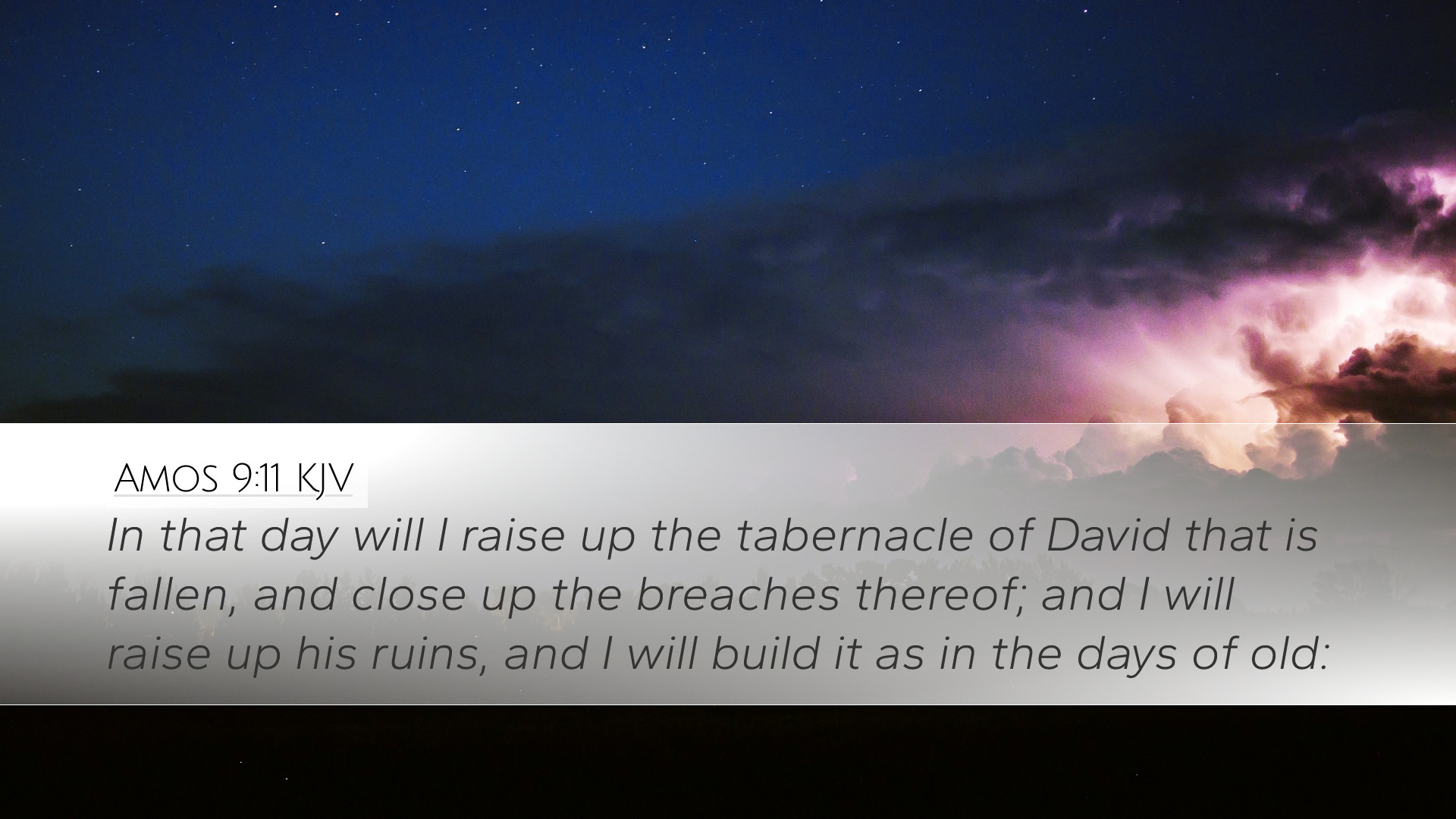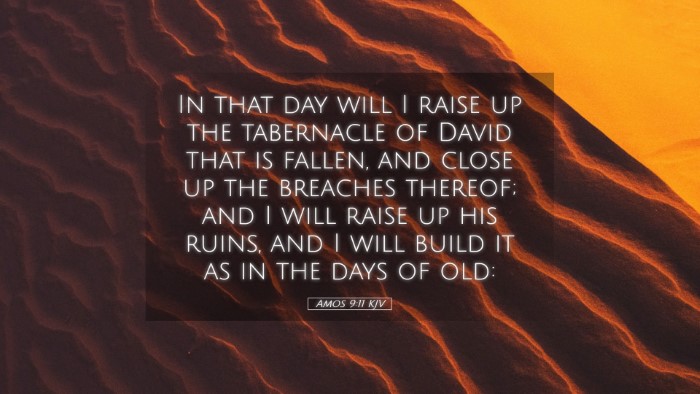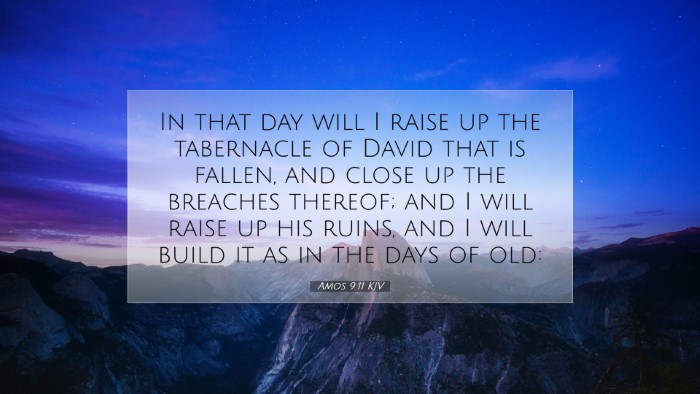Old Testament
Genesis Exodus Leviticus Numbers Deuteronomy Joshua Judges Ruth 1 Samuel 2 Samuel 1 Kings 2 Kings 1 Chronicles 2 Chronicles Ezra Nehemiah Esther Job Psalms Proverbs Ecclesiastes Song of Solomon Isaiah Jeremiah Lamentations Ezekiel Daniel Hosea Joel Amos Obadiah Jonah Micah Nahum Habakkuk Zephaniah Haggai Zechariah MalachiAmos 9:11
Amos 9:11 KJV
In that day will I raise up the tabernacle of David that is fallen, and close up the breaches thereof; and I will raise up his ruins, and I will build it as in the days of old:
Amos 9:11 Bible Commentary
Commentary on Amos 9:11
Amos 9:11 states:
"In that day will I raise up the tabernacle of David that is fallen, and close up the breaches thereof; and I will raise up his ruins, and I will build it as in the days of old."
Context and Overview
Amos, a minor prophet, speaks during a critical time in Israel's history, highlighting social injustice, divine judgment, and the promise of restoration. The prophetic proclamation in chapter 9 serves as a climactic conclusion to Amos's message, shifting from judgment to hope.
Theological Implications
- Restoration Theme: The verse encapsulates God's promise of restoration, not just of Israel but a deeper prophetic acknowledgment of the messianic lineage through David.
- Messianic Expectation: The "tabernacle of David" refers to the royal lineage through which the Messiah would come, indicating that this restoration has implications beyond immediate historical context.
- Divine Sovereignty: God's active role in restoring what is broken highlights His sovereignty over nations and His power to bring renewal.
Insights from Public Domain Commentaries
Matthew Henry's Commentary
Matthew Henry emphasizes God's faithfulness in fulfilling His covenant. He notes that the "tabernacle" symbolizes the kingdom that will be restored, which allows for the restoration of Israel to its rightful place among nations. Furthermore, Henry points out the significance of closing "up the breaches," indicating healing and wholeness after a period of division and desolation.
Albert Barnes' Notes on the Bible
Barnes suggests that the "tabernacle of David" is a metaphorical representation, signifying the prosperity of God's people and their worship. He connects this promise of restoration to the coming of Christ, affirming that Jesus is the fulfillment of this prophecy. Furthermore, Barnes elucidates that the "breaches" refer to the spiritual and physical divisions that characterized Israel's history, which would be mended in the future kingdom.
Adam Clarke's Commentary
Adam Clarke provides a comprehensive view, illustrating that the restoration pertains not only to the physical realm but also to a spiritual revival among God's people. He interprets the "ruins" as a metaphor for the moral decay of Israel. Clarke emphasizes the importance of recognizing this promise as a call to repentance and a renewal of faithfulness to God. He also touches on how the rebuilding represents a return to authentic worship and a reinvigoration of community life centered around God's presence.
Applications for Today
For pastors, students, and theologians, Amos 9:11 serves as a powerful reminder of hope and renewal in the midst of despair:
- Hope in Restoration: This passage encourages believers that despite adversities and spiritual decline, God is at work restoring His covenantal relationship with humanity.
- Call to Action: It invites the faithful to actively participate in God's restorative work through evangelism, community building, and worship.
- Understanding Jesus as Fulfillment: Reflect on how Jesus embodies the restoration of the Davidic line and fulfills the promises made to ancient Israel.
Conclusion
Amos 9:11 encapsulates the essence of God's redemptive plan, where the fallen tabernacle of David is met with divine restoration. The insights gleaned from prominent scholars shed light on the multilayered meanings of this verse, which resonates profoundly with Christians today. It serves as both a warning and an assurance, proclaiming that no matter the state of spiritual or communal disarray, God’s promise of renewal is steadfast and bound to His faithful character.


